Days 1-2 After emerging from their capped cell they get some pollen to eat then get to work cleaning their room, I mean cell. They also work to keep the brood warm. You can see lots of capped brood almost ready to emerge. Days 3-11 These young bees are called Nurse Bees, because they take care of feeding the larva. Days 3-5 they feed the older larva and days 6-11 they feed the youngest larva. Days 12-17On day 10 bees develop wax producing glands on their abdomen. Researchers still don't know exactly how it works, but I think it is a little like ear wax. At this age the bees are eating lots of honey to convert to wax. For every 6 pounds of honey they eat (as a group), they produce 1 pound of wax. They use this wax to build the comb. The comb wax is cream colored when it is new or freshly built. During days 10-16, bees are best at producing wax as they get older they produce less wax. So during days 12-17 they are making wax and building comb. They also carry food to store in the cells and perform undertaker duties. An undertaker is someone who takes care of the dead. As a bee they take any dead bees out of the hive. Days 18-21During this time, a bees stinger is at maximum potency. That means it has some really strong venom. Since they have the strongest stingers they work as guard bees. A guard bee inspects every bee that enters the hive. They can smell the bee and tell if they are from this hive or another. If a bee from another hive comes to the door with pollen or nectar the guards won't stop them. It's like they are bringing gifts. If a honey bee from another hive comes with nothing the guards won't let them enter. If a wasp, bumble bee, or yellow jacket tries to enter the guard bees will not let them in either. They will release a pheromone or a smell to warn the others. It works a lot like a fire alarm warning people there may be a fire. Other bees will come out and attack. If they are trying to rob the hive, by stealing their honey, the bees will attack. Days 22-death (40-45)This is when the worker bee begins to forage. They start searching and collecting water, pollen, and nectar. The single bee will travel to many different flowers of the same kind collecting pollen and nectar. They pollinate these flowers when pollen sticks to the hairs on their body and then rubs off onto another flower.
0 Comments
The other day, My classmates and I were invited to see how honey is harvested. Another mentor, Bob, had some neat tools to help get the honey out of the hive. Here is a look at the process of harvesting honey. You can click on the small photos to make them larger. Tools of the HarvestBob, knew what to expect so he put a large tarp down so that we wouldn't make such a sticky mess. Here are some photos of the tools we used. We had a large plastic tub with a grate in it to uncap the honey. All of the cappings would fall into the tub and any honey would fall through the grate. After uncapping honey we could put the frame in the buckets or use an extractor to get the honey out. The buckets have a nylon strainer so that only honey will pass through it. Taking off the CapsThe first part of honey harvest is bringing in the frames that are capped and filled with honey. To avoid bringing the bees in with the super box, you can brush them off with your bee brush, use a smelly fume board, or even use a leaf blower. If you are gentle, you can use any of these methods to get the bees out of the supers. Once you have your frames of honey, you will uncap the honey. When bees make honey the right consistency (not too watery) they will put a wax cap on it to preserve the honey. We used a hot knife to slice off the caps. It actually melted the wax so it was really easy to slice through the wax caps., but If that doesn't uncap all the honey comb, then you can use a capping scratcher or a fork to open the rest of the comb caps. As, you can see in the photo's the knife doesn't really look sharp, but it was hot. The scratcher is the teal tool in the middle. Extracting the HoneyNow for the really fun part. After taking the caps off you put the frames into an extractor. The extractor will spin the honey out of the frame. If you took a wet towel and spun it around as fast as you could some of the water would fling out of the towel. The extractor works the same way. While you spin out the honey you can see it fling up against the walls of the machine. It oozes down and then comes out the bottom. Then you have honey. We strained it as it dripped into the bucket and then we had a taste test. Lots of sticky goodness. Tasting the HarvestFebruary was coming to an end and I was off to a new adventure. My Husband and I headed to the County Extension Office to pick up the wood, frames, and wax to build the hive. When we arrived we saw lines of hives waiting to be picked up by my classmates. Students crowded into a small room to learn how to put the frames together. The frames hold a wax sheet that the bees will use as a foundation for building cells. We needed to insert the wax into the frames and nail down a strip of wood so the wax stays put in the frame. We also learned that we needed to weatherproof our wooden hive by sealing it with paint. This will protect the inside of the hive from moisture. We loaded the car and drove off with the scent of beeswax in the air.
A few weeks later, I finished up with painting. |
AmandaStaring at the dancing bees in an observation hive, it hits me. I love how these tiny creatures communicate. It looks like they're having fun dancing around while telling their sisters where to find some nectar. Amanda's Sting Count
2013- 6 stings 2019- 0 Archives
April 2019
Index
All
|
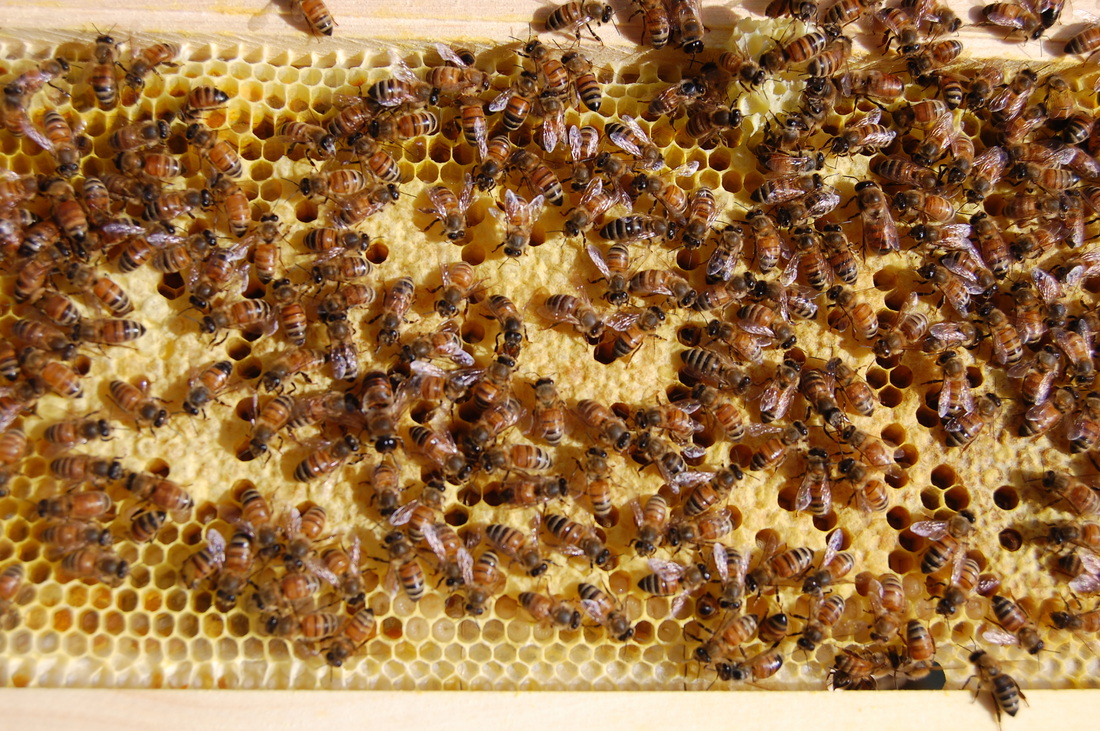
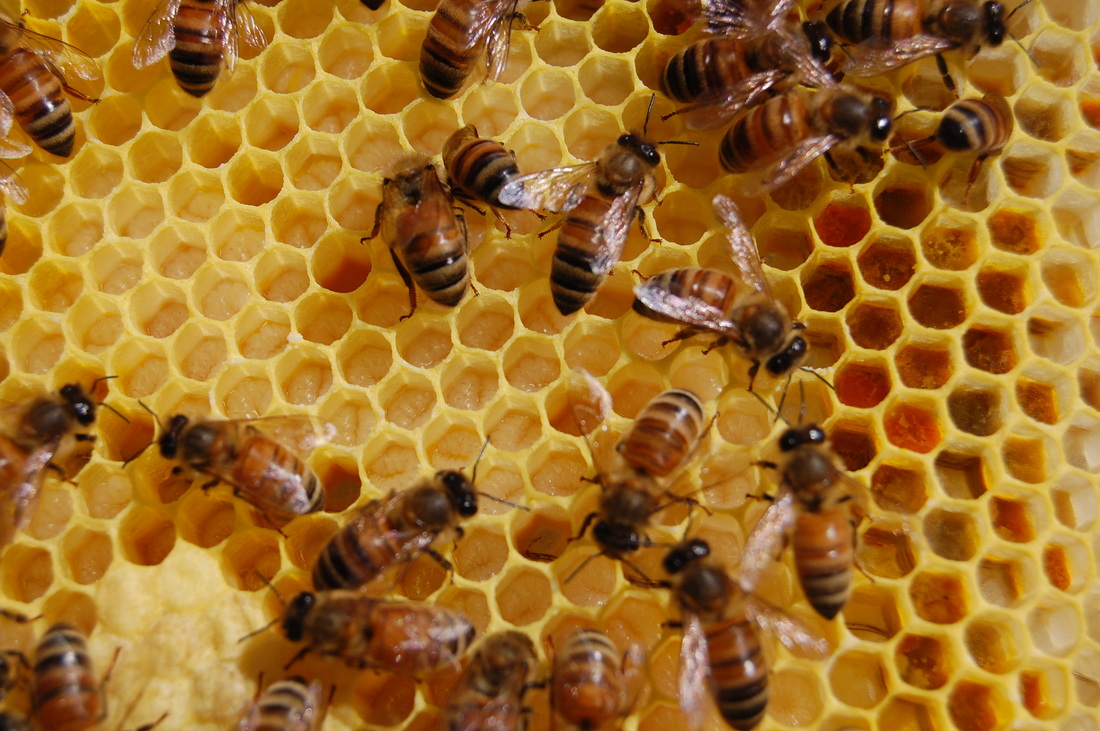
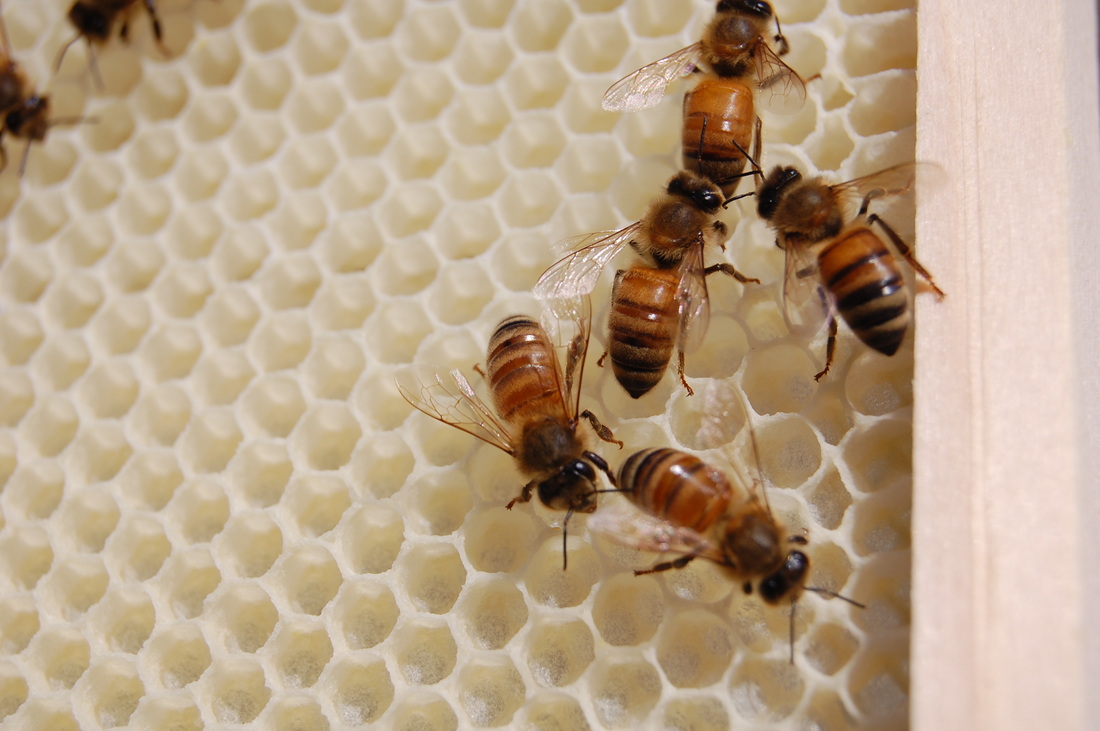
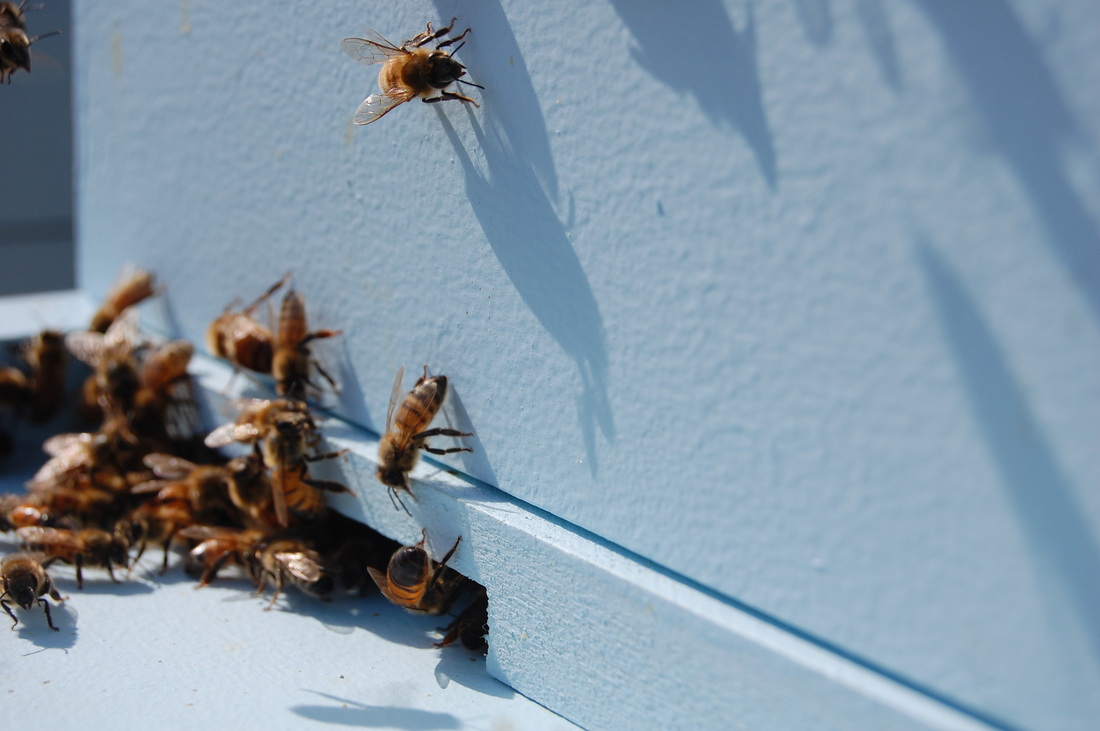
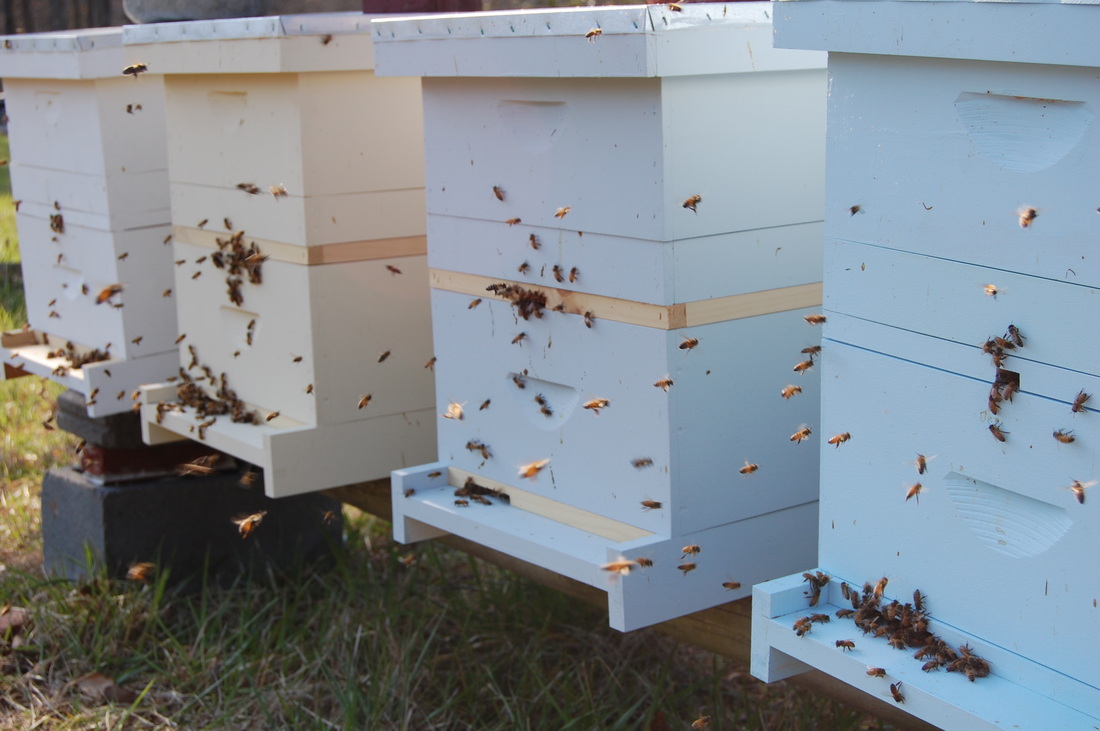
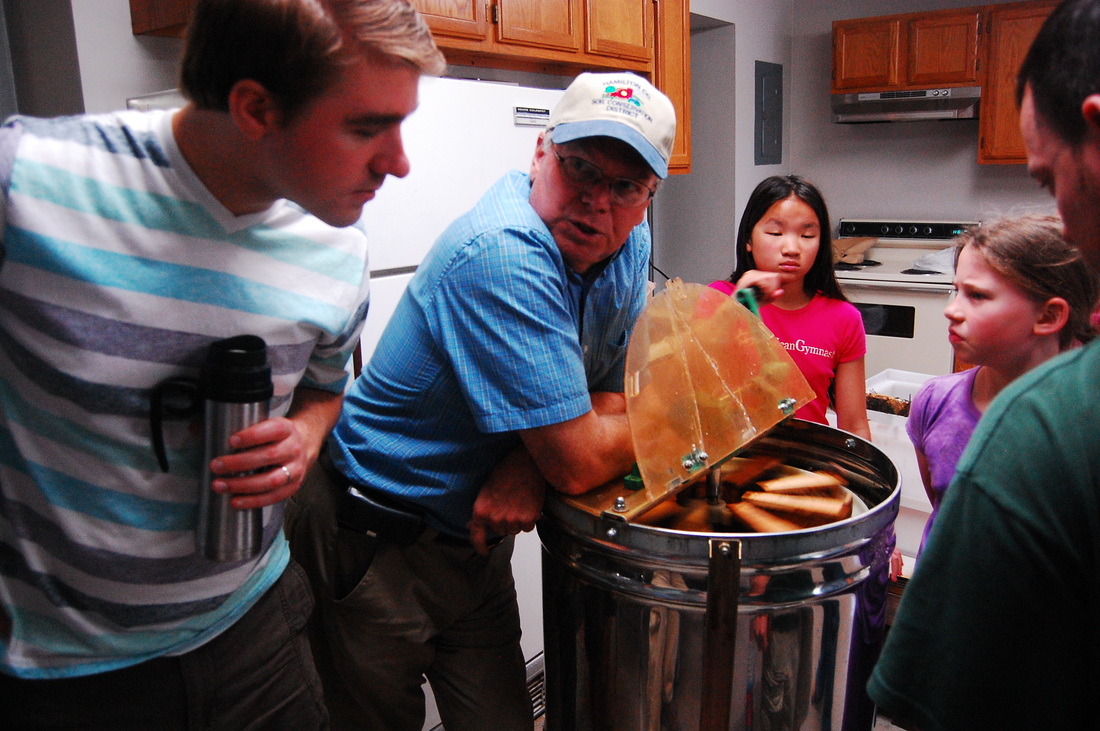
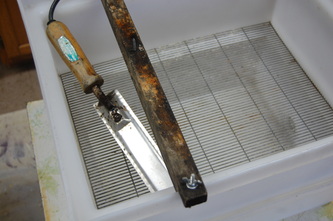
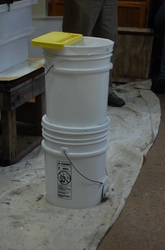
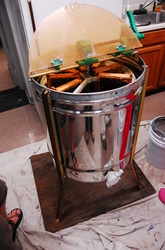
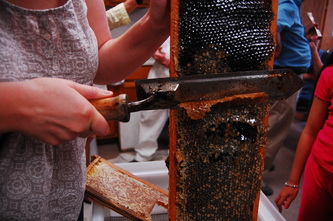

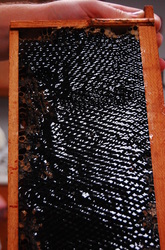
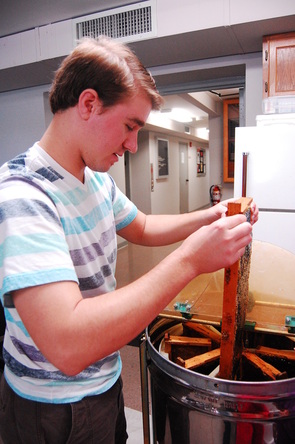
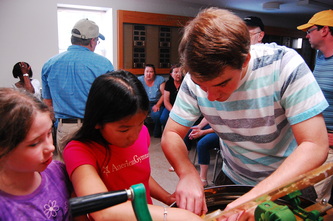
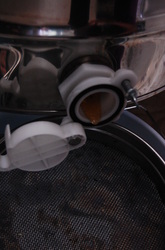
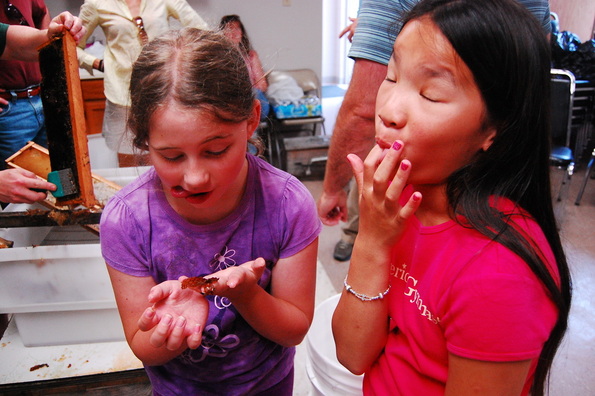
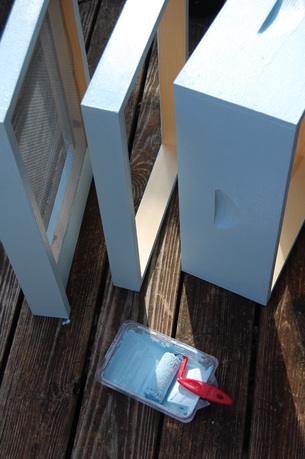
 RSS Feed
RSS Feed
